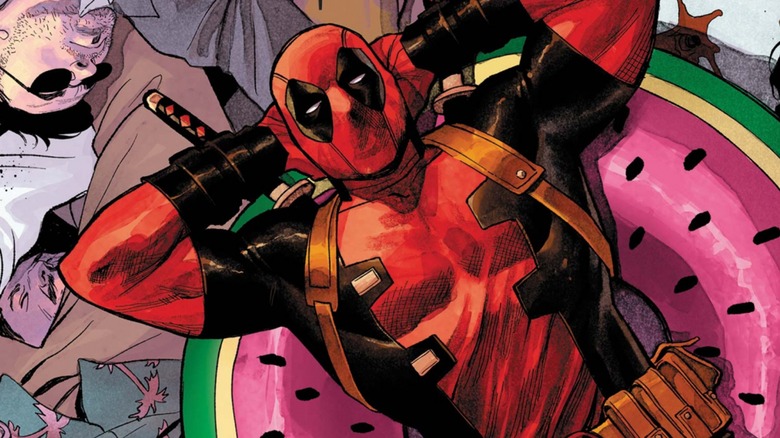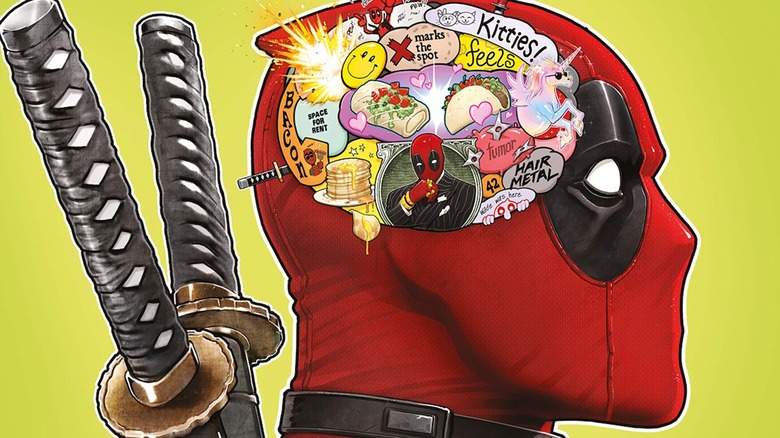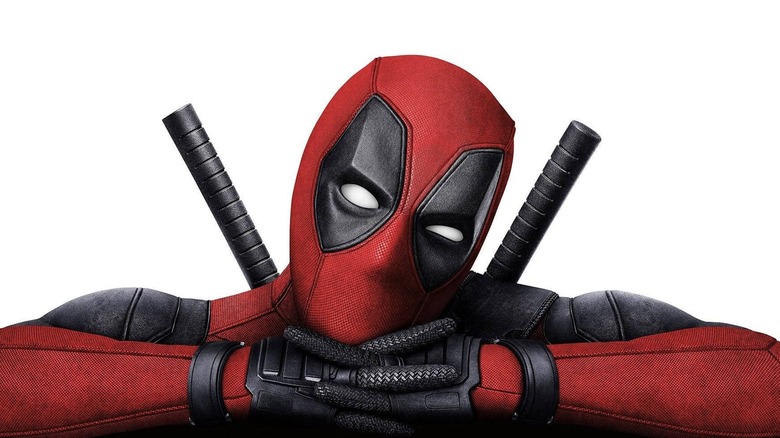When Does Deadpool Learn He's A Marvel Character & Why Does It Matter?
As one of the few Marvel characters that actually knows he's a work of fiction, Deadpool's self-referential quips and meta-commentary have arguably become Wade Wilson's most defining qualities. While some characters break the fourth wall, Deadpool explodes through it like a hyperactive Kool-Aid Man, leaving a trail of violence in his wake all while talking directly to comic book readers and movie audiences. However, the Merc with a Mouth wasn't always this way. In fact, it wasn't until years after his debut that the snarky antihero began to come to terms with his scripted reality.
Created by Rob Liefeld and Fabian Nicieza and making his debut in 1991's "New Mutants" #98, Deadpool was always a deadly mercenary who throws out as many punchlines as he does punches. But while he's already sporting his now iconic red and black suit and wielding dual katana in his first appearance, he's no more aware of the fact that he's in a comic book than any of the other characters. This was more or less the norm for the next few years, but that all changed in 1997. After starring in two successful miniseries, Deadpool finally landed his own ongoing solo title, one that would soon give us the version of the character we know today.
How the Merc got his Mouth
An acclaimed "Deadpool" run by writer Joe Kelly and artist Pete Woods put a new spin on Wade Wilson and gradually started introducing the idea of playing with the fourth wall. An early issue sees Deadpool accidentally travel back in time and relive the events of old "Spider-Man" comics, quickly establishing that this series wasn't being coy when it came to outrageous and hilarious world-bending narratives.
But "Deadpool" #28 dropped all pretenses and, for the first time, Wade blatantly revealed that he knows he's in a serialized comic book. He runs into fellow merc and longtime Daredevil villain Bullseye, who asks how long it's been since the two last met. "Issue sixteen," Deadpool nonchalantly responds, not even making a big deal of his unique perception of the Marvel Universe. And if that wasn't definitive enough, a few issues later, in Issue #34, Deadpool unequivocally states, "[N]one of this is actually happening. There is a man. At a typewriter. This is all his twisted imagination."
Subsequent creators picked up and expanded upon this new characterization of Deadpool. Before long, he began to address the readers directly, usually in the form of offering color commentary, and this self-awareness has been his trademark ever since.
Deadpool's knowledge is power!
Deadpool's devil-may-care attitude in the face of his life-threatening adventures makes a lot more sense when you consider he knows he has no control over his future. He's aware that whatever he's doing ultimately doesn't matter. He can crack jokes in even the most dire situations because the end result is up to whoever is scripting that particular issue.
Beyond the comics, this self-awareness has become so engrained in the character, it's successfully made its way to the big screen. The Ryan Reynolds-starring "Deadpool" movies lean heavily into the sort of immersion-breaking humor that was first established in the comics. The Deadpool character makes references to actor Ryan Reynolds and cracks jokes about the convoluted nature of the "X-Men" movies, providing audiences with the same sort of clever fun born in the 1997 "Deadpool" comic.
While it may have taken a few years to be fully established, Deadpool's knowledge of his fictional nature is as crucial an aspect of the character on the page as it is on the screen, and the absurdist way Deadpool handles that information has come to define his outlandish and blood-soaked hijinks.


